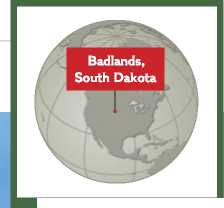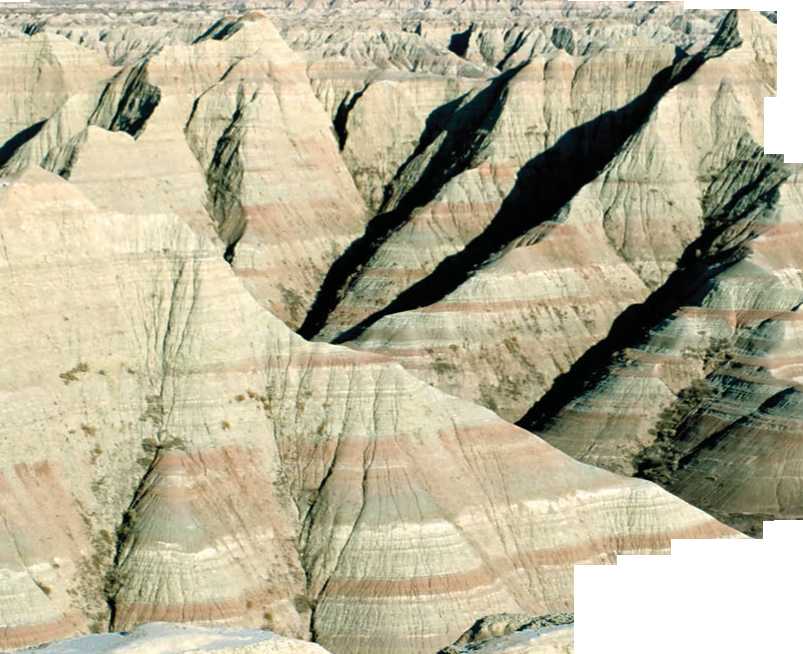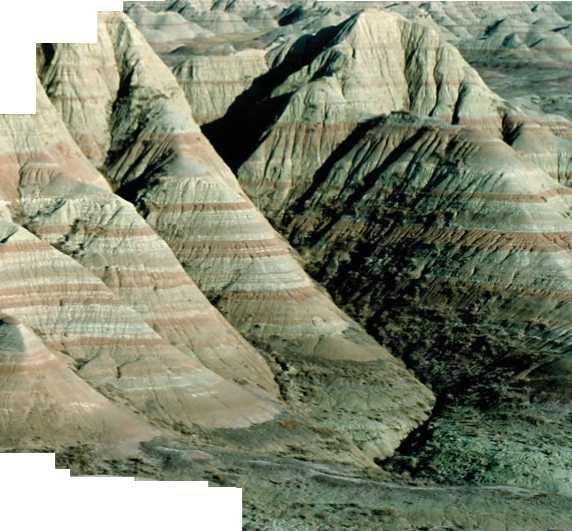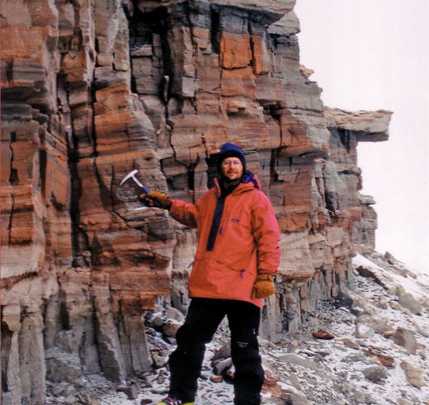Learning Objectives
Compare relative age dating and numerical age dating.
Understand the various techniques of stratigraphic correlation.
Distinguish the three types of unconformities. Understand how events in Earth history are dated.
Eologists describe the timing of events in Earth history using a “calendar” called the geologic time scale. That time scale has formal divisions that reflect major episodes in this planet’s physical, chemical, and biologic development. Understanding the geologic time scale and how it was constructed is central to the study of Earth history because all events are linked to it. The development of both life forms and geologic features makes sense only when they are interpreted in their correct time context.
It has taken almost two centuries to build the geologic time scale to the point that we know it today, and fine-tuning of the time scale still continues. Part of the reason that assembly and adjustment of the time scale has been such a lengthy process is that there is no single place where we can go to see all of geologic time written in the stratigraphic record. Instead, we must piece together various segments of the stratigraphic record (Figure 3.1) from different parts of the world to build a complete chronology of Earth’s changes and development.

Global Locator
The Badlands of South Dakota expose a thick succession of stratigraphic layers stacked like the pages of a book.
-

>"4,v ih


FiQURE 3.2 Relative ages of strata

Using stratigraphic principles allows the geologist to determine the relative order of geologic events at this cliff high in the Cumulus Hills of Antarctica. A series of sedimentary strata, still in their original horizontal position, were deposited in a stream's floodplain. The strata were deposited in upward succession. After lithification, the rocks were uplifted, and agents of weathering and erosion exposed them along the side of a ridge. Debris eroded from this outcrop has fallen to the base of the cliff, where it is now forming a new sedimentary deposit. The contact between the erosional surface (the cliff face) and the recent unconsolidated deposit is an unconformity.
¦ relative age dating The
Technique of establishing a chronology of events arranged in relative sequential order.
Technique of establishing when events occurred according to how much time has elapsed since their occurrence. Geologic time that has elapsed is measured in thousands, millions, or billions of years.
Study of layered rocks, including their compositions, origins, geometric relationships, and ages.
Matching of strata from one location to another.
Events that occurred in geologic time, or “deep time,” are assessed in two general ways. The first way of unraveling the timeline is by using relative age dating techniques (Figure 3.2). Events such as the uplift of a mountain range, a rise in sea level, or the evolution of a new animal species, are placed in sequential order, beginning with those that occurred first and continuing with those that occurred subsequently. There is no direct implication of exactly when an event occurred in time, only whether a particular event occurred before or after some other event. The relative sequence of events can be determined through application of Nicolaus Steno’s principles of superposition, original horizontality, and original lateral continuity; through application of Charles Lyell’s principles of cross-cutting relationships and included fragments; and through application of William Smith’s principle of biotic succession.
The second way of unraveling a chronology of events is by using numerical age dating techniques (Figure 3.3 on pages 64-65), in which geologists calculate how many thousands, millions, or billions of years ago an event occurred. Numerical age dating techniques include counting tree rings, counting layers of ice drilled from glaciers, and counting sediment layers in ancient lakes. Especially useful for determining when events occurred in deep time, though, is radiometric dating, in which the time a sediment or rock unit formed is deciphered from information encoded in radioactive isotopes.
The geologic time scale was originally assembled using relative age dating methods. In practice, geologists today use relative and numerical age dating techniques side-by-side whenever possible to work out geologic problems.
Stratigraphy is the study of Earth’s rock and sediment bodies. Stratigraphy mostly deals with layered rocks and sediments (Figure 3.1, Figure 3.3), but igneous and metamorphic rocks are often included as well. One major goal of stratigraphic work is the matching of rock units from place to place based on evidence of their environment of formation or on the basis of when in time they were formed. Another major goal of stratigraphic work is determining the sedimento-logic conditions under which rock units formed, whether sediment precursors were deposited in a stream bed, along a shoreline, in the deep ocean, or elsewhere.
To piece together the segments of the stratigraphic record and place them in their correct time sequence, we rely on a variety of stratigraphic techniques: lithostratigraphy,
Biostratigraphy, chemostratigraphy, and sequence stratigraphy. Each of these techniques allows for the matching of strata, or correlation, from one locality to another (Figure 3.3). When enough overlapping segments of the stratigraphic record are matched together, we can eventually reconstruct the entire stratigraphic record.
Correlating rock units fiqure 3.3
Rock units can be correlated using relative age dating techniques on the basis of their lithology (lithostratigraphy) or on the basis of criteria that are proxies for geologic time (chronostratigraphy). Fossils, variations in chemical isotopes, variations in physical properties (such as radioactivity levels), and sequences of unconformity-bounded strata are some of the variables that provide an understanding of the relative timing of events in geologic history and that can be used to correlate strata from one place to another. This hypothetical example shows how we can correlate among sections of relatively undisturbed rocks (A) using some commonly applied techniques (B-D).




 World History
World History









